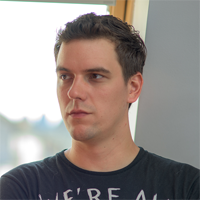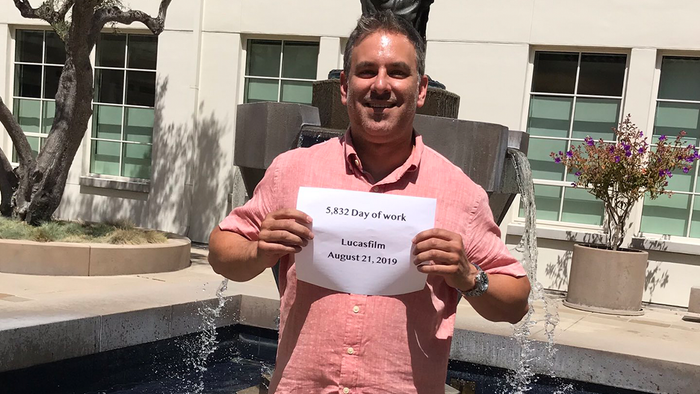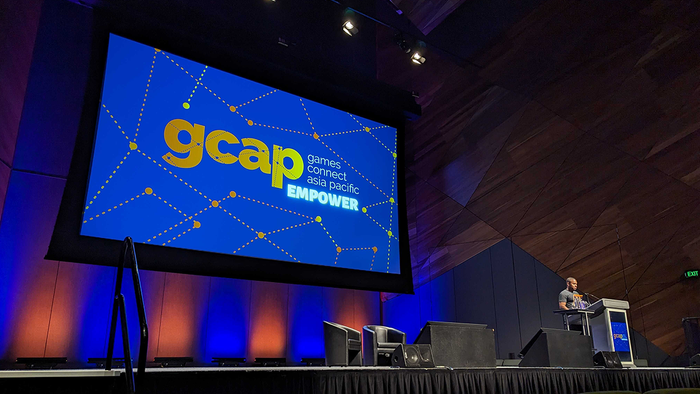A Ludum Dare postmortem. Lessons from the blitz.
Game jams are a blurry, adrenaline filled, caffeine infused roller coaster. Take some time to reflect when the haze is gone and there are valuable lessons to be learned.

Originally posted on our website: http://www.rikodu.com
The 35th edition of Ludum Dare from April 2016 was our first and it was an amazing experience. It was also an instructive experience, teaching some good lessons about production and creativity.
Getting a game done in 72 hours is no simple feat, but we had one additional challenge: our hastily assembled team of 5 was working together for the first time. One thing that worked in our favor was that we had a really good mix of skills. We had one concept/2D artist, one 3D artist/level designer, one sound engineer and two devs. I also think we did a few things that helped to make collaboration smoother and enabled us to deliver a playable game.
Before we dive into the lessons though, let me tell you a bit about how this all played out. Feel free to skip past the next section if you only came here for the (highly subjective) wisdom.
Inside the Ludum
The stage was set. We got together on Saturday morning 9 AM (GMT+2). The place: Rikodu Attic.
The theme for this edition of Ludum Dare was Shapeshift so we started brainstorming a game around that idea. We ended up making Second Hand: Frankie’s Revenge , a game about a robot assembled from different parts who is trying to survive the horrors of the Junkyard. The goal is simply to survive the increasingly difficult waves of enemies coming at you.
The player starts as a rolling barrel (bear with me here) and can pick up parts from the junkyard to graft on their body or replace an existing part. So you can end up with a giant fridge, zooming around on top of a Roomba, with a TV for a head and wielding two chainsaws to wreak havoc. We wanted to find a fun idea that was close to the Ludum Dare theme of Shapeshift but with a bit of a twist. I’m happy with what we came up with.
And so the game was on! After working 51 of the 72 hours we submitted Second Hand a mere 20 minutes before the deadline. It turns out that you’re allowed to submit small patches after the deadline (both a good and a bad thing - more on this later) so we fixed some glaring issues and submitted two patches right after.
Check out the final Ludum Dare build here: http://ludumdare.com/compo/ludum-dare-35/?action=preview&uid=89846.
Once the adrenalin passed and we got some much needed sleep, it was time to play some games! There’s a three week voting phase you see and the whole team got into the habit of playing and rating games each day. Seeing other people’s wild, crazy ideas is creative fuel of the best kind and we drank our fill.
Three weeks passed fast and on May 9th I posted this little screenshot to our Slack channel.
Alright! Top 100 in the fun category and almost top 100 for innovation. With more than 2,700 entries in the contest, we were elated with the results, especially since this was our first Ludum Dare. Nikos, our Illustrious Bard was a little sad that the public didn’t enjoy the dark ambiental music and funky sounds as much as the rest of the game but we were still in the top 15% rated games for Audio.
So how did this go and what lessons did we learn? Let’s dive in!
Constraints are the fuel of creativity
Inspiration. Imagination. Creativity. How to get inspired is a question that’s plagued many a creator or entrepreneur. “If only I had a great product (game) idea!”, or so the saying goes. Interestingly enough, having too much freedom is a problem for many endeavors and can be a problem for creative projects too. In the latter case you start with a blank slate, you can do anything and therefore can’t come up with anything.
How to get past it? Bring some constraints to the table. Let’s compare two challenges and see which one you think is more manageable:
Design a fun video game
Design a fun video game about shapeshifting that can be created in 72 hours.
Now, there’s no mention anywhere about how easy or hard this is, merely that it’s easier to start when you have more constraints. My personal explanation as to why that is has to do with one aspect of how our brains function. The human brain is wired to enjoy problem solving; you actually get a little kick whenever you overcome a problem. This is a fundamental driver of human evolution. My wildly speculative theory is that when problems are too general (e.g. the first challenge) the brain doesn’t quite recognize them as problems but when you add some constraints it gets to work and starts doing what it enjoys: looking for ways around them.
Taking off my amateur psychologist hat, how does this all relate to the Ludum? Well, because Ludum Dare is a game jam and it has the typical jam format, it makes brainstorming easy. Even if you think you’re the kind of person who isn’t very good at coming up with ideas, you’ll be surprised. Here’s what we came up with in very short order:
Rolling boulder picking things up and augmenting itself
Robot moving around, killing enemies and grafting pieces to change itself
Giant golem defending against attackers and grafting, throwing, losing parts of itself
Highly stylized world that evolves around you (things grow out of the ground, etc.)
Microorganism or nanobots move around trying to evolve and grow
Chameleon tries to do its thing but is really bad at blending in
Totem with multiple faces that twist and change the environment
Soul trying to find its way and switching between heaven and hell
Alien trying to escape a facility shifting into different objects
Maze sphere that you manipulate like one of those physical mazes
Shapeshifting gun
Pick up shapeshifting blueprints to become small and go under things, etc.
Now, these are just the one-line descriptions we used when we listed the ideas. After all, “shapeshifting gun” doesn’t say too much and couldn’t really be called an idea. Take my word for it though, each of these was pitched internally by whoever came up with it and there was much more detail to them. We then had to debate, detail, filter and argue some more before finally settling on the concept. Sum it all up with a 2.5 page design document - I strongly support having one even when you’re just jammin’ - and we had our starting point.
The constraints helped us many more times during production as we had to cut, adapt and reprioritize features. It forced us to find creative solutions in order to stay true to our concept while still staying within the time and theme constraints we had. Lesson learned: when you’re feeling at a loss on how to advance, add some constraints.
Having a plan is awesome even if you don’t stick to it
Before we even got to brainstorming, I wanted to get organized. Spreadsheet time!
Having a plan was going to be crucial because game jams are all about having something playable when the time runs out. Every experienced jammer will tell you that time management is one of the most important skills you need to exercise during a jam, lest you risk ending up with a half-finished, unplayable mess.
I did my best to keep things organized throughout the three days. Production never goes completely according to plan but having a plan really pays off when things start going off track. If you’ve laid out a path you can easily see when you’re starting to stray. You’ll quickly realize if (or rather when) you’re falling behind instead of taking hours chasing after a target that you have no chance of hitting. And when you do run off track you can adjust course or redefine the target to something that’s achievable under the current conditions.
Throughout production we used the following tools and documents:
Google Calendar - I added the deadlines for every phase with multiple reminders for each.
Design Document - We used this 2.5 page GDD mostly to make sure we had thought every aspect through. We consulted it a few times but I’d say the process of writing it was more useful than the final document.
Production Plan - I had no intention to spend too much time on planning but I still felt it was necessary to have a document that contains the entire roadmap. My production plan was little more than a color coded feature and asset sheet but it was still extremely useful. When we ran off track, it was easy to decide what we could sacrifice and which important points weren’t getting enough attention.
Asset Sheet - Ovidiu and Gabi, our Art Conjurers, used this sheet to keep track of all the assets they found that would fit our game.
Lots of Coffee - Don’t underestimate the importance of the black fuel of creativity.
In the end we were able to deliver a playable game that communicated the concept well. It was a lot different than what we described in the original production plan, but that’s to be expected. I’d say that from a delivery standpoint our 51 hour, caffeine-guzzling marathon was a success!
Core lesson here: Having a plan that’s valid at the present time is extremely important. It allows you to be agile and react to changing circumstances, but only if you take the time to update and consult it regularly. Don’t be afraid of change though and don’t try to rigidly stick to the plan.
Team + shared vision = crack
It’s hard to describe the atmosphere and feeling of camaraderie that developed over the three days. Bear in mind that the five of us had never worked together as a team before and some of us barely knew each other. Under these circumstances, I wouldn’t have been surprised if five people had gone in, only for three beastmen to come out at the end, blood-soaked and frothing at the mouth. Okay, maybe I’m exaggerating a bit, but you get my point.
It turns out that when you take a group of people with a common goal, who have a shared love for something (games!) and let them all express themselves and contribute in a positive manner, good things happen.
Game design for Second Hand was a shared responsibility. There was no Master Designer and I resisted my Overlord inclination to make room for great team work. Now I’m not saying anyone should ditch their game designer and just spread the job around. I strongly support having clear responsibilities and utilizing every team member’s core strengths - more on this topic some other time - but I also think it’s important to be open and let everyone have their say about anything. When you do this, it becomes easier for people to buy into the vision. It creates a shared sense of ownership and when that happens you will see that tired cliche in action: a team creating much more together than the sum of all individual members’ work.
I think this happened for our game. Everyone was really passionate about it and we all poured our hearts into it. When we left home late into the night to catch some sleep, we were exhausted but still thinking about what to do next. I was dreaming code, spreadsheets and source control.
So is there a downside to this shared vision crack? Maybe the occasional lack of perspective. Like say, when Radu and I decided, after 19 hours of nonstop work and after submitting our Ludum Dare entry, that “Hey, we really should fix these last couple of issues and get some more enemies in there. Let’s make a quick 1.0.1 patch and submit that!” Does this sound sane to you? It sure doesn’t to me but when you’re high on adrenalin and your brain is on standby this is a wonderful idea.
So off we went, wrote patch 1.0.1, happily submitted it and went to sleep. Then when I woke up next morning I found that we had made the game essentially unplayable (it worked on my machine!) so I furiously coded 1.0.2 which is the final version on the Ludum Dare website.
Lessons learned? Shared vision creates shared ownership and this makes everyone work at their best. Also, don’t submit day-zero patches at 5 AM after 19 hours of work.
The End?
Second Hand was our first Ludum Dare entry but we liked the project so much that we’ve decided to take it further. Second Hand is coming to Greenlight soon! If you like the idea and want to help out, subscribe to our newsletter here or follow Second Hand on Twitter and Facebook.
We’ve also just launched our studio website at Rikodu and will be sharing what we learn as development progresses. Hope to see you around.
Cheers!
Read more about:
BlogsAbout the Author(s)
You May Also Like








